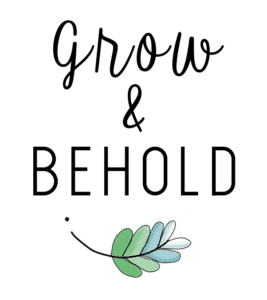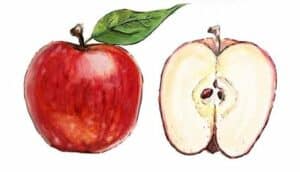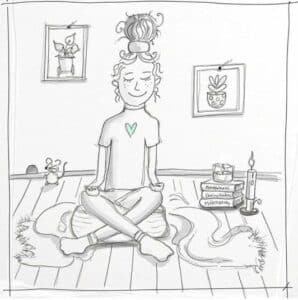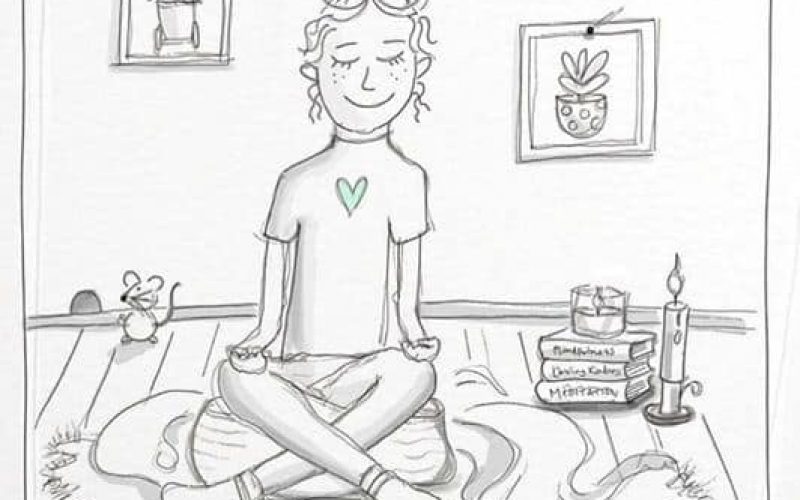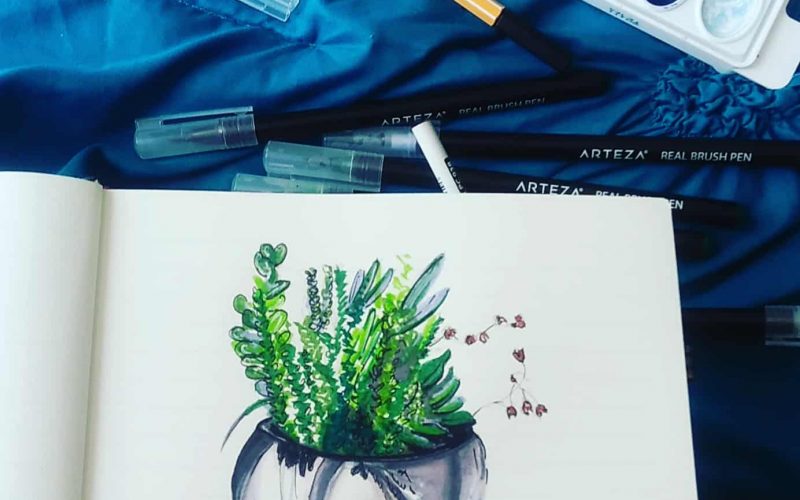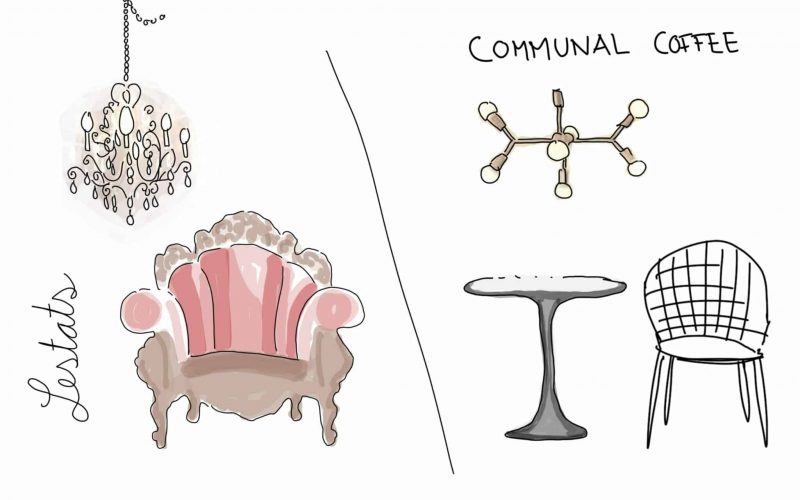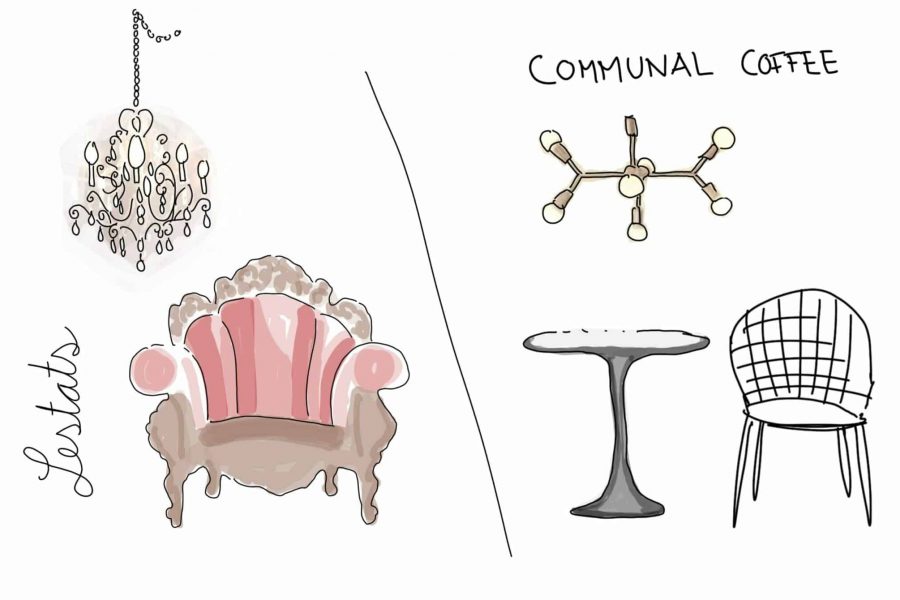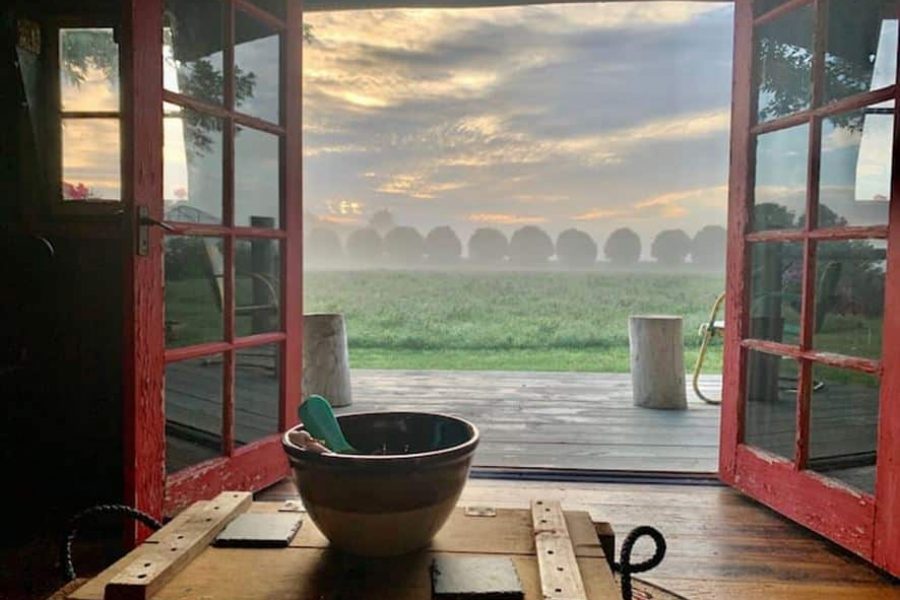Forever is composed of Nows.
– Emily Dickenson
Do you ever go throughout your day completely distracted, with your head spinning off in so many directions you feel like you have a tornado in your brain? You may be sitting on the couch at home but feel like you are at work because of all the pressing thoughts of what needs to be done.
Mindfulness provides a way to catch these thoughts as they are appearing and to become more aware of what is happening in the present moment. It’s beautiful to watch children play and live their lives, because they are completely present in everything they do. The way they can stare at a ladybug in awe indicates that mindfulness may come naturally to children. When we get older we tend to stop noticing the more subtle things around us. Even some of the larger things get lost in the transgression of life. What a shame. It really is in the small details and small moments that we can find true joy and satisfaction.
Mindfulness could be a good technique for you if you:
-Feel anxious and tense
-Feel like your mind won’t stop racing
-need constant distraction and stimulation
-seem to always be thinking of the next thing on your list or what you are going to do later
Mindfulness can be a key tool in breaking through these cycles and experiencing more peace and joy. A growing body of research suggests that people who experience a wide variety of problems, including anxiety and panic, can benefit from mindfulness. Daily meditation practice is one way to foster a life of mindful living (Brantley, 2007).
So what does it mean to practice mindfulness?
According to Brantley (2007), “practicing mindfulness means learning to relax and stay present with a nonjudging and friendly awareness. Mindfulness is cultivated by paying attention— on purpose and carefully— to the contents of this moment in a friendly and allowing way.” (p.25)
If we can slow down enough to become aware of our thoughts and sensations, we can catch our thoughts and observe what is going on inside of us. We don’t need to try and change them, but usually the act of becoming aware is enough to create a deeper sense of peace and equilibrium.
Through a study in which breath, oxygen consumption and blood levels were measured, Benson (1993, as cited in Brantley, 2007) found that stress and anxiety was reduced when the subjects were meditating. Moreover, brain waves that indicate rest and relaxation were increased while normal waking activity brain waves were decreased. These findings show that human beings have the power to direct their attention in order to experience altered states of being and achieve calm within.
Another study led by Richard Davidson and Jon Kabat-Zinn in 2003 followed twenty-five subjects who practiced meditation and mindfulness over an eight-week period. Compared to the control group that consisted of sixteen people, the group that meditated had heightened brain activity in regions associated with reduced anxiety and positive emotional state. Subjects also experienced increased immunity when measured in response to a flu vaccine (Brantley, 2007).
So I know the benefits of meditation and have started a meditation practice, now how can I bring mindfulness into the rest of my life?
Here are some ideas of how you can practice mindfulness off of your meditation pillow.
In the kitchen and when you eat
The kitchen can be a beautiful and peaceful space in which we cook and share meals with others. When meal preparation gets rushed and if we feel stressed or are distracted, this can affect how we experience our food and even absorb it. Hahn (2005) sees cooking and eating as a meditative practice and believes that “we should offer our full presence for every meal.” (p.40) When you serve the food, think about how much went into the creation of what is on your plate (Figure 1). When you take the first bite notice smells and taste. Try to limit technology or distractions during your meals.
Figure 1
Drawing of an apple
Note. You can use eating as a mindfulness exercise. Notice the details of your food, such as the color and texture. (image by author)
Talking
The next time you have a conversation with someone, really try and listen to what they are saying and observe how you want to respond. Become aware of thoughts and feelings you may be experiencing. Pay attention to the words you use and see if you have any judgments about the conversation.
Mindful breathing
Resting is vital for our well-being. From personal experience I believe resting benefits ourselves and others. Breathing is one way to return to equilibrium and experience calm in a restful state. Mindful breathing can be practiced either sitting or lying down. When we rest we create space for the body and mind restore themselves (Hahn, 2005).
Mindful walking
Usually when we walk, we are not aware of the movement of our body. Try walking mindfully and pay attention to your feet as you lift them, step forward and place them on the ground again. Even something as simple as walking, which is typically taken for granted, can turn into a powerful moment of mindfulness (Austin, 1998).
I think a lot of us feel like mindfulness is a difficult concept to grasp. We think it happens outside of ourselves or that we need special training. However, as Hanh (2005) put it so well:
Mindfulness is the energy of being aware and awake to the present. It is the continuous practice of touching life deeply in every moment. Practicing mindfulness does not require that we go anywhere different. We can practice mindfulness in our room or on our way from one place to another. We can do very much the same things we always do— walking, sitting, working, eating, talking— except we learn to do them with an awareness of what we are doing. (p. 10)
So the next time you find your mind wandering, bring it back to the present moment. Notice what you are doing. Feel your feet on the ground. Notice the sights and smells around you. You may want to start a meditation practice in order to sharpen your mind and have more moments of awareness (Figure 2). These words from Austin (1998) may act as a motivation: “With long practice, the advanced meditator develops enough clear mental space to be conscious of each percept individually.” (p. 127) It is definitely worth it. Keep trying. Keep coming back to the present moment. You will reap the rewards and experience a beautiful and peaceful unfolding of your life.
Figure 2
Illustration of a girl meditating
Note. Meditation is a helpful practice which allows you to experience more mental peace and clarity. (image by author)
References
Austin, J. H. (1998). Zen and the brain: Toward an understanding of meditation and consciousness. MIT
Press.
Brantley, J. (with Kabat-Zinn, J) (2007). Calming your anxious mind: How mindfulness and compassion
can free you from anxiety, fear, and panic (2nd ed). New Harbinger Publications.
Hanh, T. N. (2005). Happiness : Essential mindfulness practices. Parallax Press.
